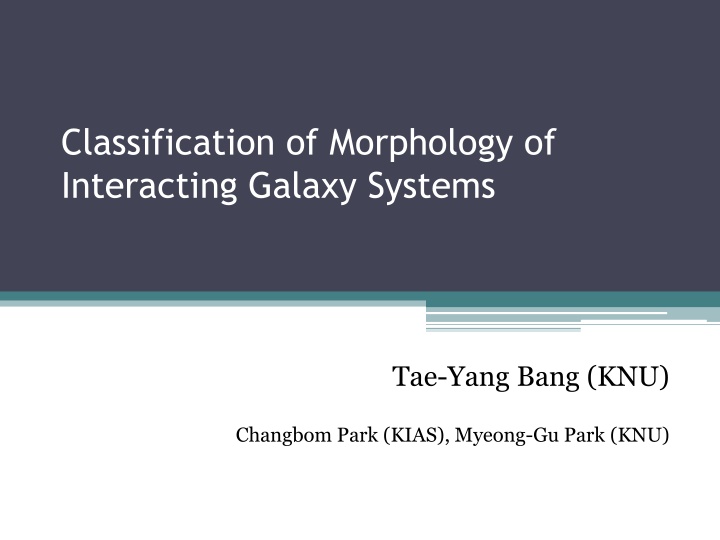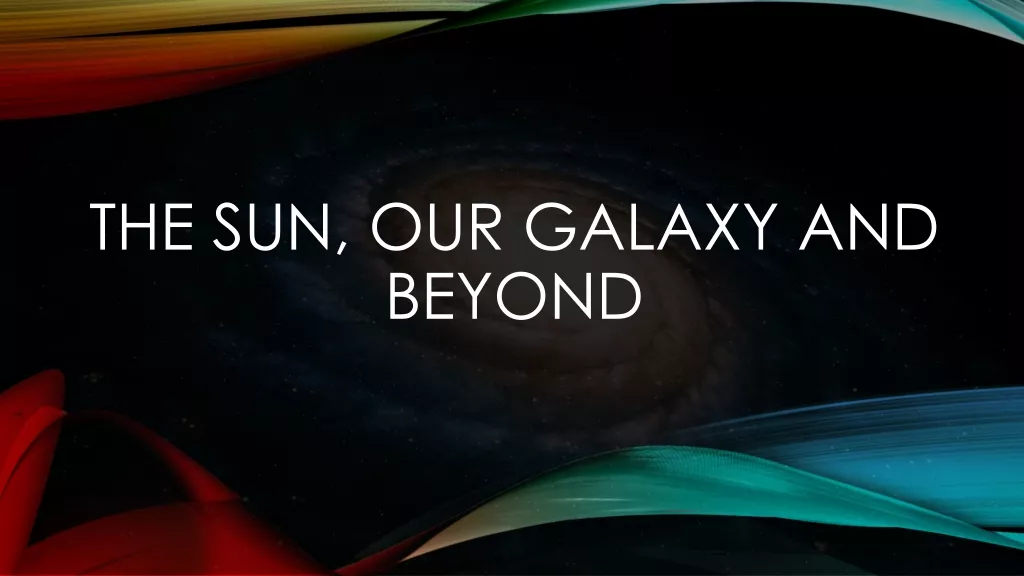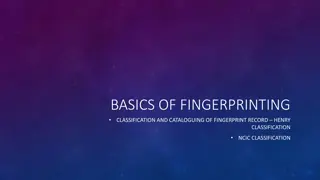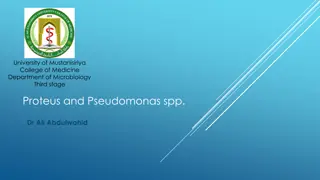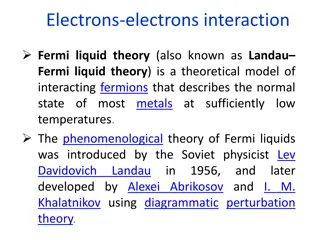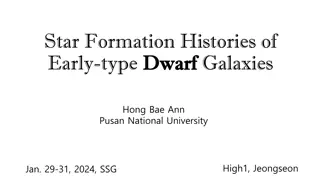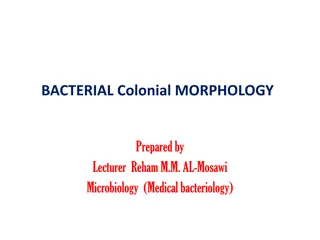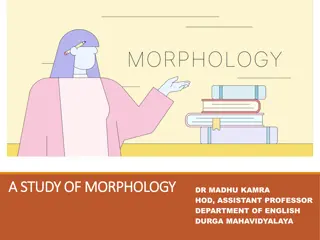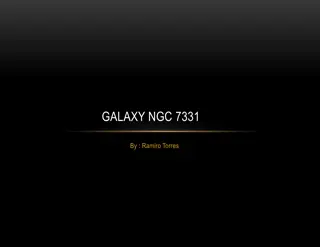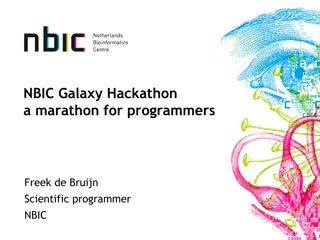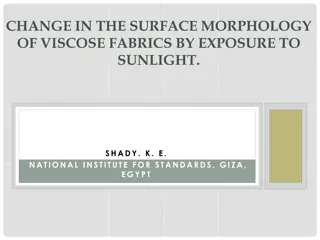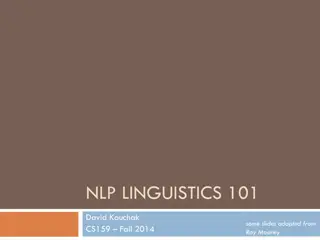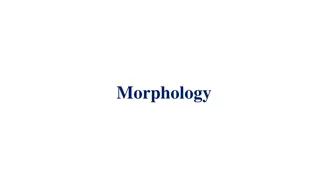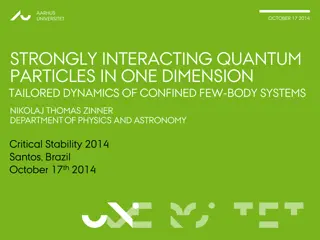Morphology of Interacting Galaxy Systems: Classification and Comparison
This study by Tae-Yang Bang, Changbom Park, and Myeong-Gu Park explores the classification of interacting galaxy systems based on their morphology and features. The research compares parameters of interacting galaxy pairs, analyzes center and edge types, and discusses future work to understand the differences between these types.
Download Presentation

Please find below an Image/Link to download the presentation.
The content on the website is provided AS IS for your information and personal use only. It may not be sold, licensed, or shared on other websites without obtaining consent from the author.If you encounter any issues during the download, it is possible that the publisher has removed the file from their server.
You are allowed to download the files provided on this website for personal or commercial use, subject to the condition that they are used lawfully. All files are the property of their respective owners.
The content on the website is provided AS IS for your information and personal use only. It may not be sold, licensed, or shared on other websites without obtaining consent from the author.
E N D
Presentation Transcript
Classification of Morphology of Interacting Galaxy Systems Tae-Yang Bang (KNU) Changbom Park (KIAS), Myeong-Gu Park (KNU)
Introduction In Park & Choi (2005), ~ 10% of early-type galaxies (ETGs) toward to blue side (u-r < 2.5) in u-r vs g-i gradient space. Classified Interacting galaxy pairs by their interacting features and compared parameters. Park & Choi. 2005
Introduction Data set KIAS VAGC (Choi et al. 2010) 0.02 < z < 0.047, r < 17.6 Nearest galaxy conditions (Park & Choi. 2009) 1. Nearest neighbor galaxyof a target galaxy is located closest on the sky. 2. Nearest neighbor galaxyhas to satisfy the magnitude condition that absolute magnitude of the nearest neighbor galaxy is brighter than Mtarget+ 0.5. 3. Nearest neighbor galaxyalso has to satisfy the radial velocity condition that radial velocity difference less than = 600 km s 1(early-type target) or 400 km s 1 (late-type target). 8,542 galaxy pairs
Center type. Spiral tidal bridge extends to the center of ETG
Edge type. Spiral tidal bridge extends to the edge of ETG
Conclusion & Future work Center Type and Edge Type galaxy pairs are very close pairs (~20 kpc) in comparison with other pairs (~50 kpc) and show very clear interacting features. ETGs of Edge Type are brighter but not more massive than those of Center Type. And spirals of Center Type are more massive but slightly dimmer than those of Edge Type. Comparing with Center Type pairs, Edge Type pairs have higher angular momentum. In color-color gradient space, spiral galaxies of Center types are redder and have more positive color gradient than those of Edge types. We need much more Center Type and Edge Type samples to deduce statistically significant conclusion. Comparing with simulation.
Please visit poster No.2, Thank you!
